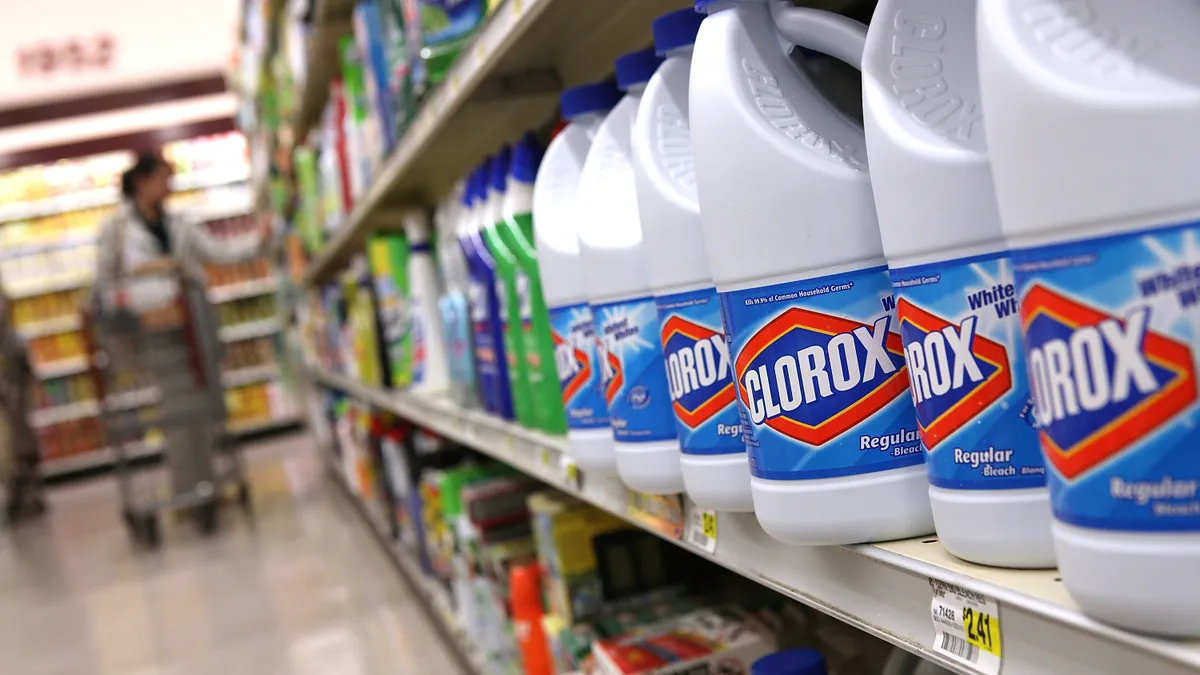Dive Brief:
- Digital transformation, supply chain optimization and a newly announced streamlined operating model will yield up to $100 million in savings over the next two years, EVP and CFO Kevin Jacobsen said during the company’s Q4 2022 earnings call Wednesday.
- In August 2021, the 109-year-old company committed to a five-year, $500 million modernization plan that included converting to a cloud-based enterprise resource planning platform by 2024 to 2025.
- Over half of Clorox’s $500 million tech investment will be represented as incremental operating costs, according to the company’s Q4 earnings report. Most of that spend — 70% — is tied to the implementation of the new ERP.
Dive Insight:
Clorox is gearing up for a major modernization by implementing a streamlined operating model, CEO Linda Rendle said during the earnings call for fiscal year and quarter that ended on June 30.
“We want to ensure that the technology we put in place through our digital transformation is supported by a structure that enables it and uses it as fast as we possibly can to ensure that we're closer to the customer and closer to the consumer,” Rendle said.
Quarterly sales for Clorox were flat at $1.8 billion for Q4 2022. The company, best known for its bleach and related disinfectant products, has seen profits rise and fall in cadence with the pandemic. Demand for cleaning products surged in the early days of COVID-19 and receded as vaccines and other measures have diminished the threat.
The pandemic taught manufacturers and retailers the value of modernization, as supply chain issues and uneven consumer demand strained legacy ERP systems. Companies that updated ERP systems prior to 2020 had an advantage, and many that hadn’t moved initiate upgrades.
Clorox, which has a portfolio that includes Pine-Sol cleaners, Fresh Step cat litter, Hidden Valley salad dressings and Burt’s Bees personal care products, was caught off guard. The company, founded in 1913, was running on a 20-year-old ERP system.
Rendle is targeting long-term growth of 3-5% in spite of inflation and other macroeconomic concerns.
“We'll keep addressing these challenges head on through actions that include revenue management, further pricing, ongoing cost management and supply chain optimization, our digital transformation and the streamline operating model we announced today,” she said.














